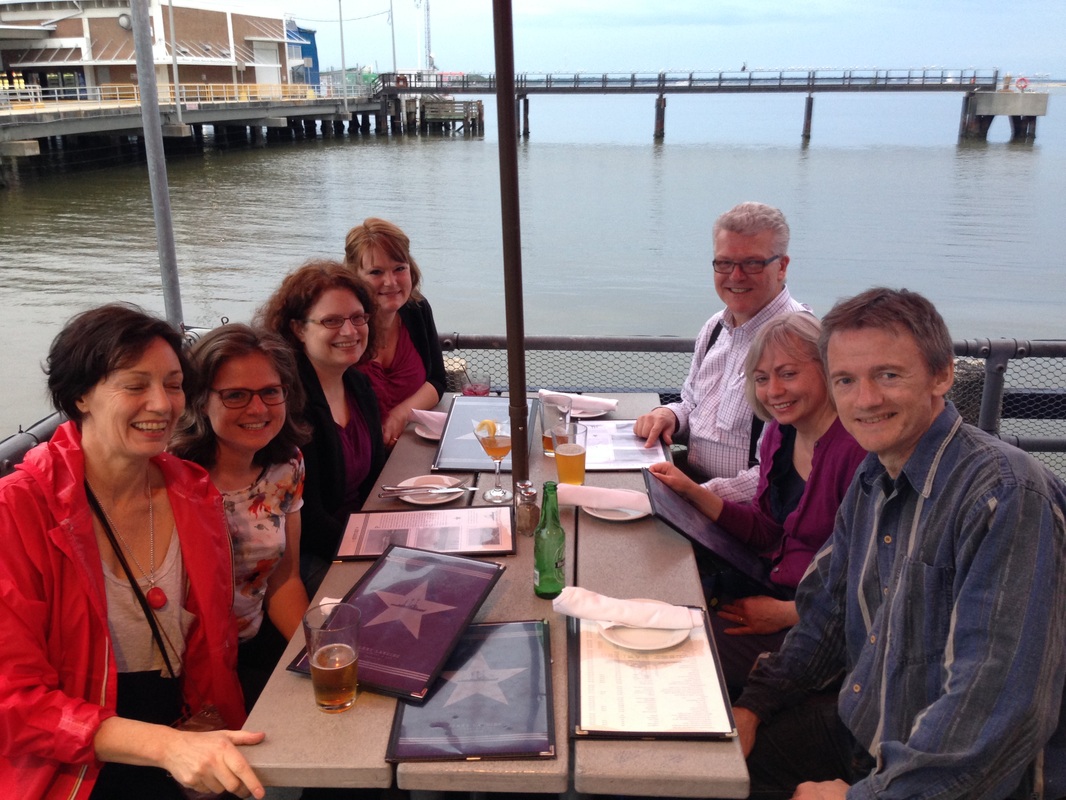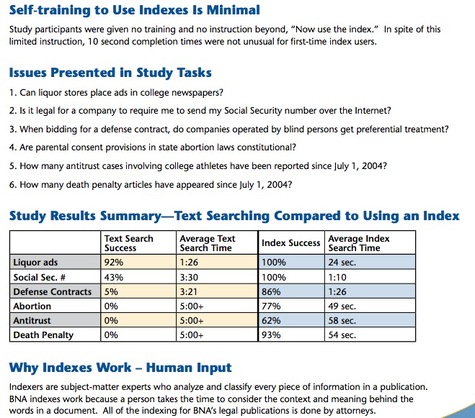A last post about the ASI Conference in Charleston (before I forget it all) has to include Terry Casey. As a nervous Newbie Indexer, but also as a mature woman, I was concerned about how sharing accommodations with an unknown Other might work out. I joined the ASI-L group on Yahoo, as was suggested in a Keywords issue, in order to find a potential roommate. When I checked out the situation pre-conference, it seemed as though people had already planned that aspect and I was afraid I’d end up on my own, and paying for it on my own. I really wanted to find someone to share with in order to alleviate the cost, but who knows how these things can turn out?
Had I known what great people Indexers can be, I would’ve also known not to worry. My indexing mentor Clive Pyne is a great person, but it’s hard to generalize from knowing a population of one! But then I met a whole bunch of great people! And largely through Terry Casey...
Had I known what great people Indexers can be, I would’ve also known not to worry. My indexing mentor Clive Pyne is a great person, but it’s hard to generalize from knowing a population of one! But then I met a whole bunch of great people! And largely through Terry Casey...
Who also, as it happened, was the Newbie facilitator (sitting on my left). So, I just want to shush any nervous Newbie qualms out there, about bunking up with congenial Others, and simultaneously thank Terry Casey for her generosity, extroverted personality, and Event Planner channelling!
After the conference, Margie Towery started a thread on the ASI-L (June 10) regarding hosting future conferences at University campuses to defray hotel costs. The hotel rooms for the Charleston conference were very roomy with sitting rooms attached, but with a door that could be closed between the sleeping area, the bathroom and the sitting room. This feature may have made sharing with a stranger in close quarters a little more graceful. One could sleep while another could stay up, or have a long shower. I discovered that the Indexers I met are caring and careful people, so the option of closing a door is I think, important. One can choose to live in close quarters, or not, and be less anxious about irritating the other person. I knew I would always be able to find a bit of quiet (even with a generous, energetic, event-planning extrovert!)
That said, now that I am no longer a complete Newbie, I could definitely entertain bunking up in a campus dorm. But as a first experience, the Indexing conference at Charleston was pretty much perfect.
With Steve Falk, Terry also facilitated and scheduled an ice-breaker activity, as well as managing the Newbies and their Buddy(ies). For conference old-timers, this is how it looked in our Newbie in-boxes:
You have been paired up as a Buddy and Newbie for the upcoming ASI Conference. In the next week or so, please take a few moments to introduce yourselves to each other via email by answering the questions below. That way, you will know a little something about each other when you meet in Charleston.
1. What is your name? (It might not be obvious from your email address.)
2. What are your city and state and your Chapter (if you belong to one)?
3. What types of work have you done besides indexing?
4. What do you do for fun (besides indexing!)?
5. What is one other fun fact about you that others would find interesting?
We have scheduled a Buddy/Newbie “get acquainted” meeting on Wednesday, April 30, at 5:15 pm at the Embassy Suites (the Conference Hotel). We will have a short, fun ice-breaker activity, and then we will go the general Conference Welcome Reception together. Please attend our Buddy/Newbie meeting if you can.
We look forward to meeting all of you in Charleston.
Terry Casey and Steve Falk
ASI Conference Buddy Program Coordinators
Who knew that retiring indexing persons could be so effusive and fun! The unexpected noise of gabbling circles of Indexers, introducing one to another during the ice-breaker round, was a delight to be part of. Terry’s great positive energy paved the way for lots of strangers to have fun together. I asked her to sum up her conference experience:
The conference did, and always does, give me a boost of energy and excitement about my business. Giving me new ideas and new connections.
That about says it all. A pleasure shared is a pleasure doubled.
After the conference, Margie Towery started a thread on the ASI-L (June 10) regarding hosting future conferences at University campuses to defray hotel costs. The hotel rooms for the Charleston conference were very roomy with sitting rooms attached, but with a door that could be closed between the sleeping area, the bathroom and the sitting room. This feature may have made sharing with a stranger in close quarters a little more graceful. One could sleep while another could stay up, or have a long shower. I discovered that the Indexers I met are caring and careful people, so the option of closing a door is I think, important. One can choose to live in close quarters, or not, and be less anxious about irritating the other person. I knew I would always be able to find a bit of quiet (even with a generous, energetic, event-planning extrovert!)
That said, now that I am no longer a complete Newbie, I could definitely entertain bunking up in a campus dorm. But as a first experience, the Indexing conference at Charleston was pretty much perfect.
With Steve Falk, Terry also facilitated and scheduled an ice-breaker activity, as well as managing the Newbies and their Buddy(ies). For conference old-timers, this is how it looked in our Newbie in-boxes:
You have been paired up as a Buddy and Newbie for the upcoming ASI Conference. In the next week or so, please take a few moments to introduce yourselves to each other via email by answering the questions below. That way, you will know a little something about each other when you meet in Charleston.
1. What is your name? (It might not be obvious from your email address.)
2. What are your city and state and your Chapter (if you belong to one)?
3. What types of work have you done besides indexing?
4. What do you do for fun (besides indexing!)?
5. What is one other fun fact about you that others would find interesting?
We have scheduled a Buddy/Newbie “get acquainted” meeting on Wednesday, April 30, at 5:15 pm at the Embassy Suites (the Conference Hotel). We will have a short, fun ice-breaker activity, and then we will go the general Conference Welcome Reception together. Please attend our Buddy/Newbie meeting if you can.
We look forward to meeting all of you in Charleston.
Terry Casey and Steve Falk
ASI Conference Buddy Program Coordinators
Who knew that retiring indexing persons could be so effusive and fun! The unexpected noise of gabbling circles of Indexers, introducing one to another during the ice-breaker round, was a delight to be part of. Terry’s great positive energy paved the way for lots of strangers to have fun together. I asked her to sum up her conference experience:
The conference did, and always does, give me a boost of energy and excitement about my business. Giving me new ideas and new connections.
That about says it all. A pleasure shared is a pleasure doubled.





 RSS Feed
RSS Feed